Chapter 4
Advanced on-page optimizations
Everything we’ve covered so far is enough to optimize pages well, but there are other things you can do. So if you’re already ranking well and want to push things higher or just want to go to town with your on-page SEO, here are a few ‘advanced’ optimizations.
1. Optimize for featured snippets
Featured snippets are a type of SERP feature that often show near the top of the search results. They answer the searcher’s question with a short excerpt pulled from one of the top-ranking pages.
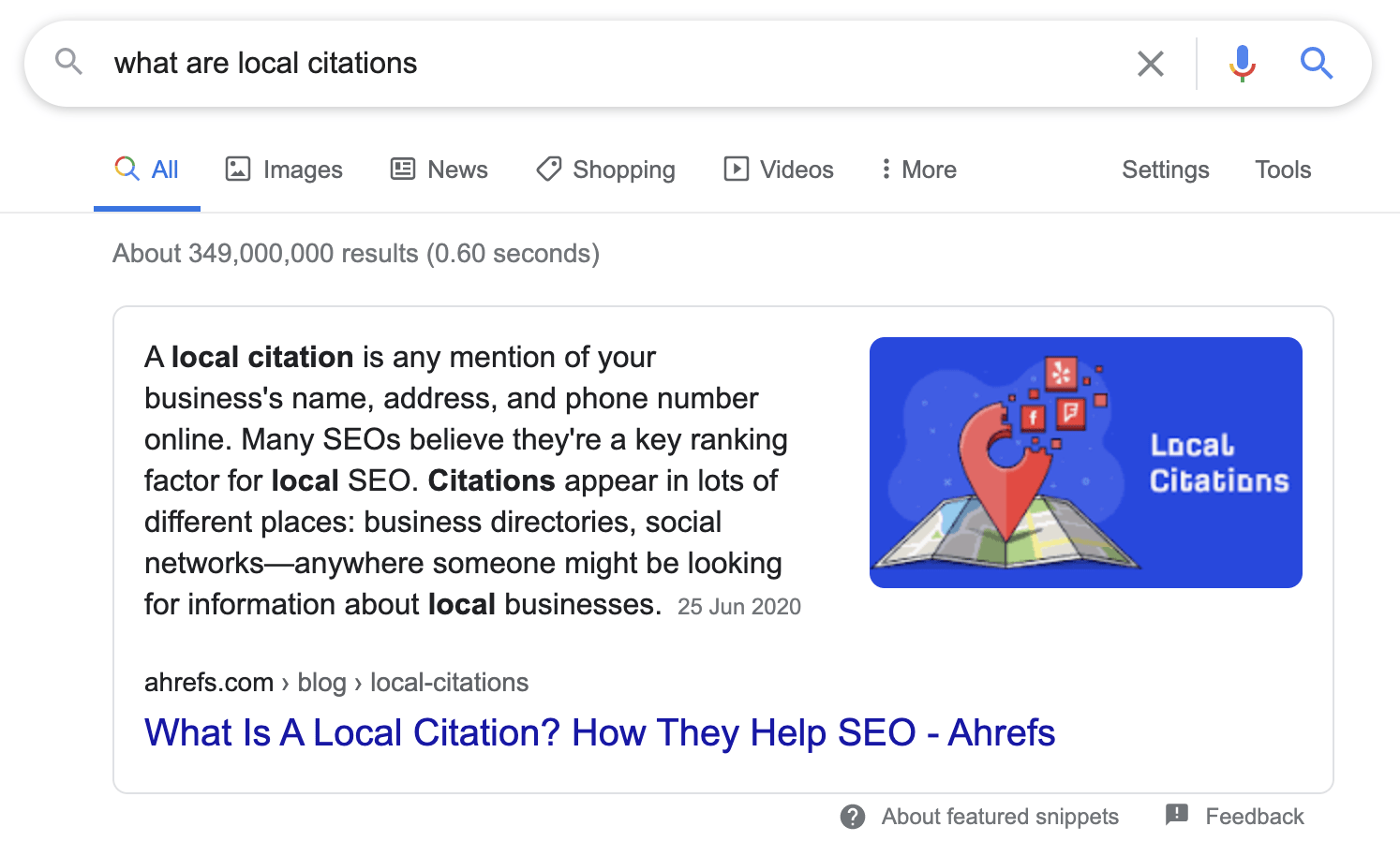
Featured snippet for “what are local citations.”
Because the snippet’s answer comes from a page in the search results, it’s possible to effectively shortcut your way to the top position by ‘winning’ the snippet.
Doing this is often easier said than done, but the basic process is:
- Be in the top 10. Google usually pulls the snippet from one of these pages.
- Make sure Google already shows a featured snippet. You’ll use this to understand how to ‘answer’ the query.
- Provide the answer on your page. Google can’t pull from your page if it’s not there.
- Use the right format. Paragraph, list, or table—what do Google and searchers expect to see?
For example, let’s say that we wanted to see whether there are featured snippet opportunities for our post about evergreen content. If we plug the URL into Ahrefs’ Site Explorer, filter the Organic keywords report top 10 rankings, we see that we’re already ranking in the top 10 for ‘evergreen content.’
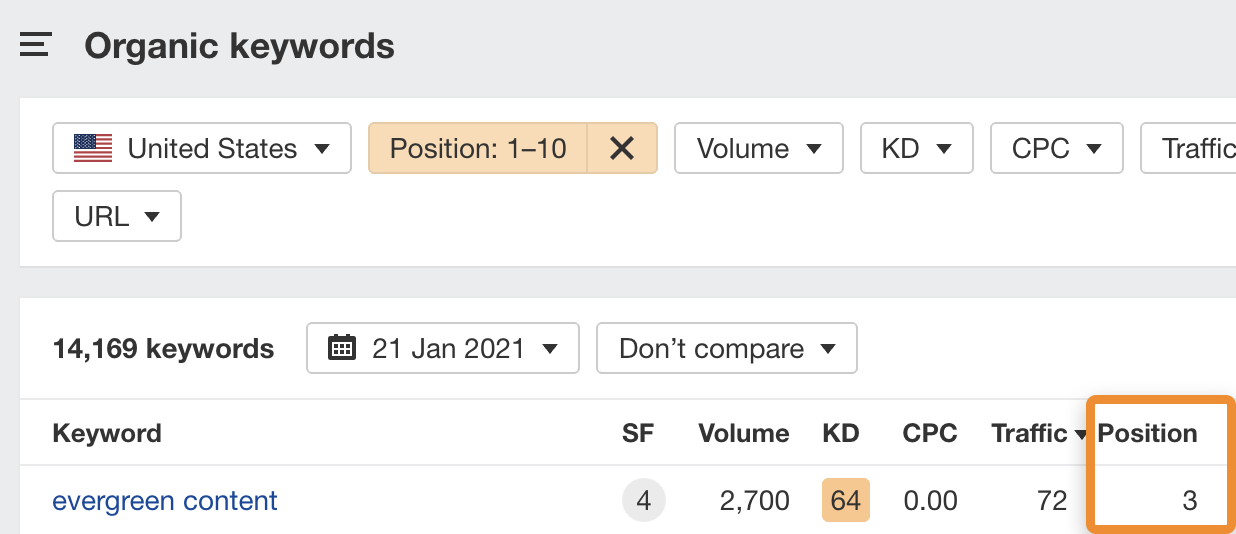
Our US ranking for “evergreen content” via Ahrefs’ Site Explorer.
If we check the SERP, we see that the current featured snippet is a short paragraph with a definition of the term.
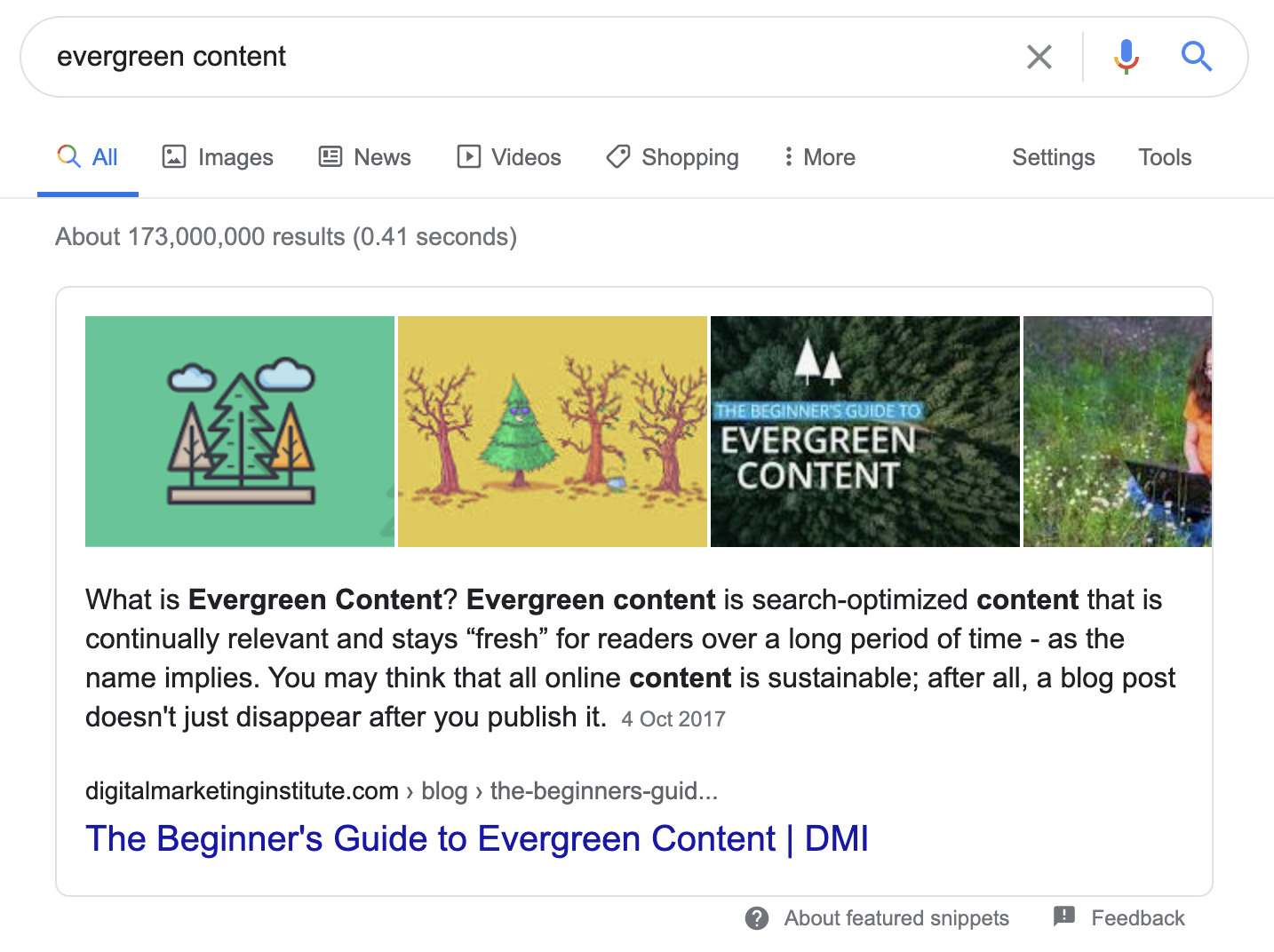
Definition in the featured snippet for “evergreen content.”
To be in the running for this featured snippet, we’d need a definition on our page.
If, on the other hand, we wanted to win the snippet for ‘most visited websites,’ we’d probably need to include a table with top searches and their monthly search volumes.
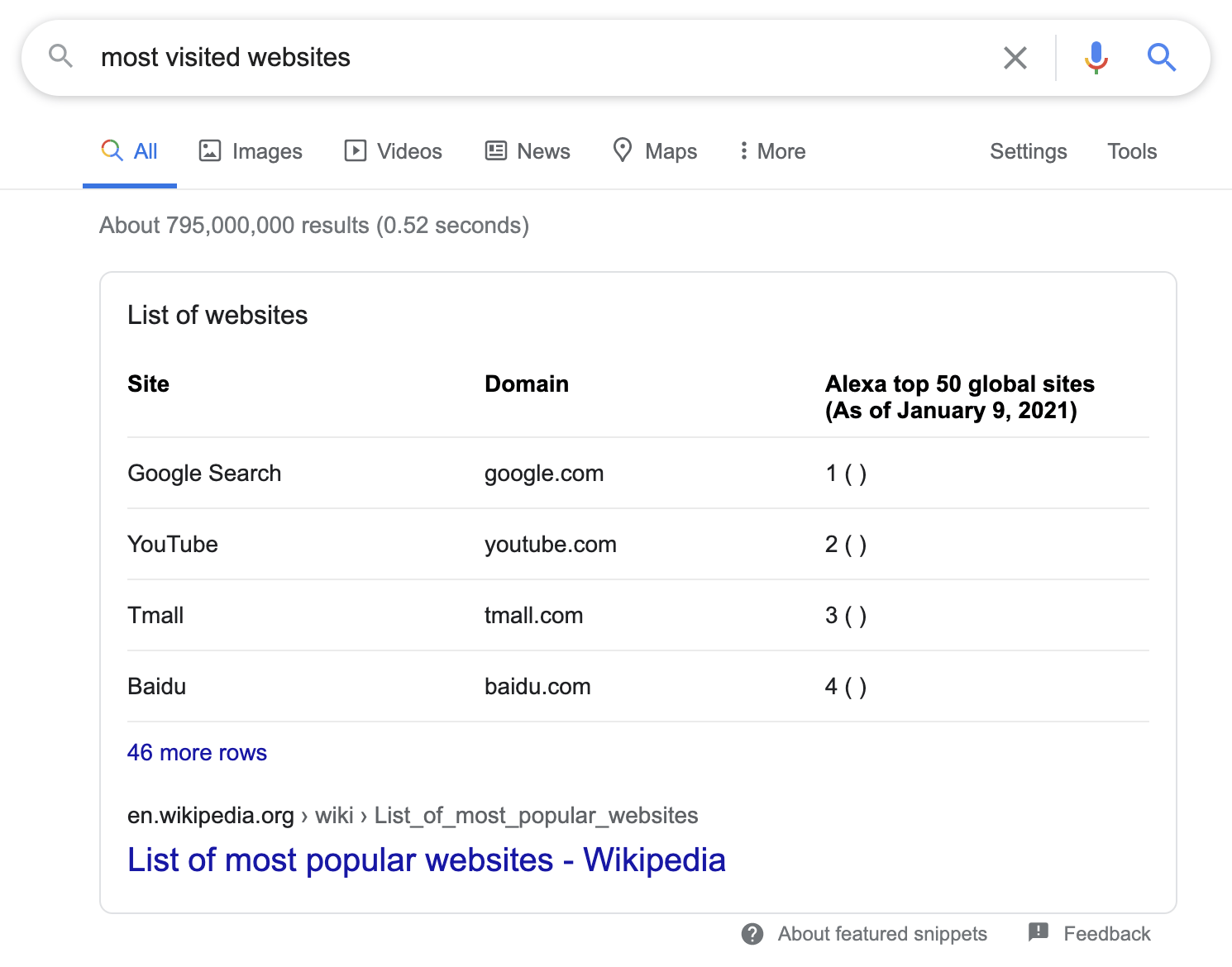
Table in the featured snippet for “most visited websites.”
2. Embed link magnets
Links remain an important Google ranking factor. And while link building is off-page SEO, not on-page SEO, you can entice more links by including linkable snippets on your page.
How do you know what a linkable snippet is?
Look at why people are linking to similar, competing pages.
For example, the main target keyword for one of our posts is “long tail keywords.” If we plug that keyword into Ahrefs’ Keywords Explorer, we see a few similar posts with plenty of backlinks.
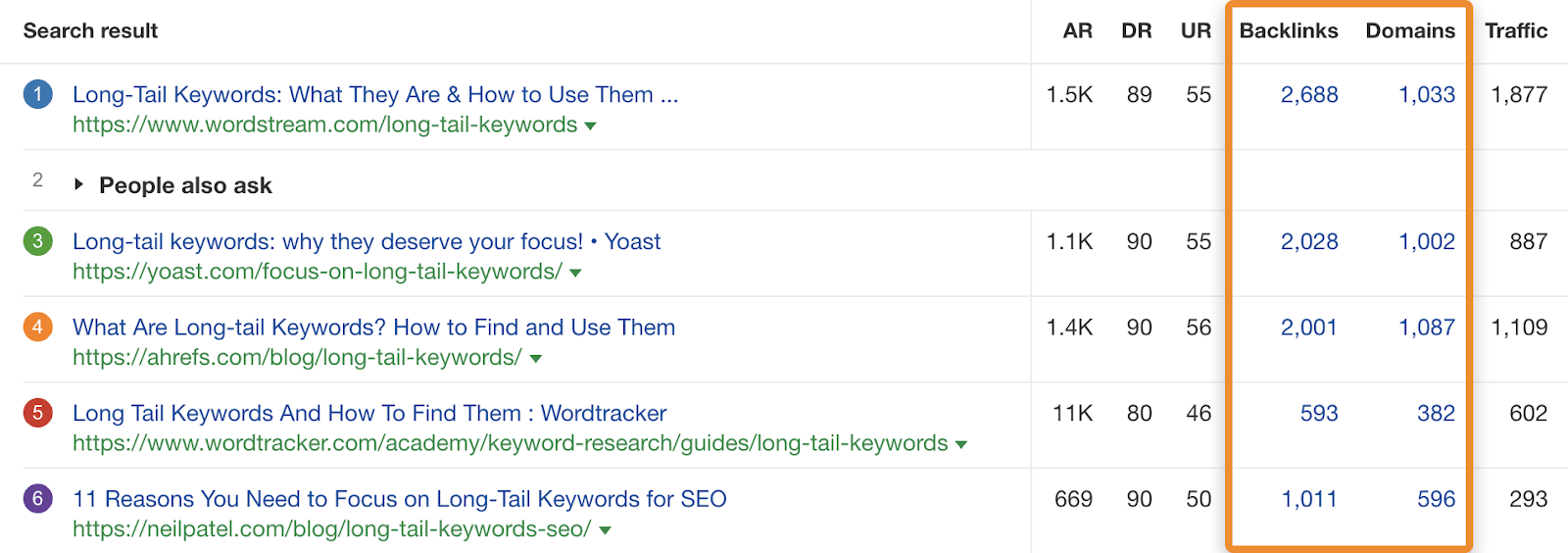
US rankings for “long tail keywords” via Ahrefs’ Keywords Explorer.
Let’s plug just one of these posts into Site Explorer and check the Anchors report. This shows the most common words and phrases people use when linking to the page. In this case, we see a lot of people linking due to statistics.
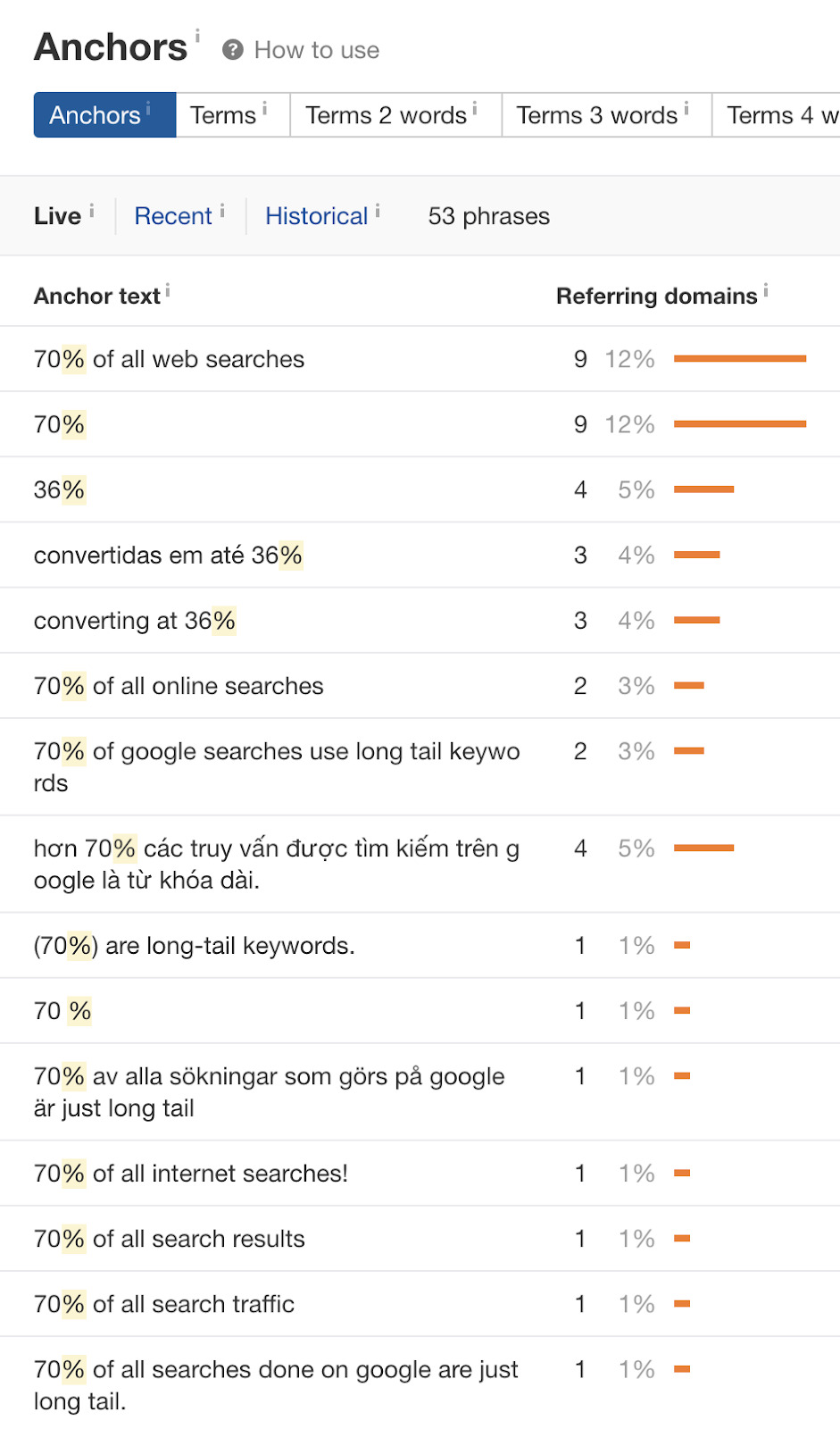
Anchors report in Ahrefs’ Site Explorer.
That tells us we should probably include some statistics in our post to increase ‘linkability.’
If we switch gears and check the Anchors report for a top-ranking page for “SEO copywriting,” we see many people linking because of two unique concepts.

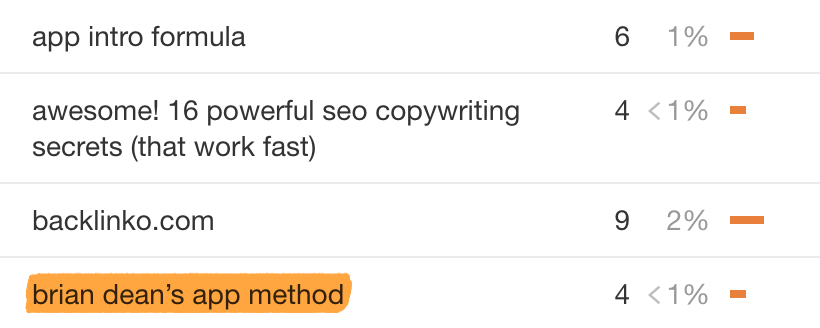
It probably wouldn’t make sense for us to include these same concepts in our post, but we can include some unique ideas of our own to increase linkability. That’s what we did when we wrote about SEO copywriting.
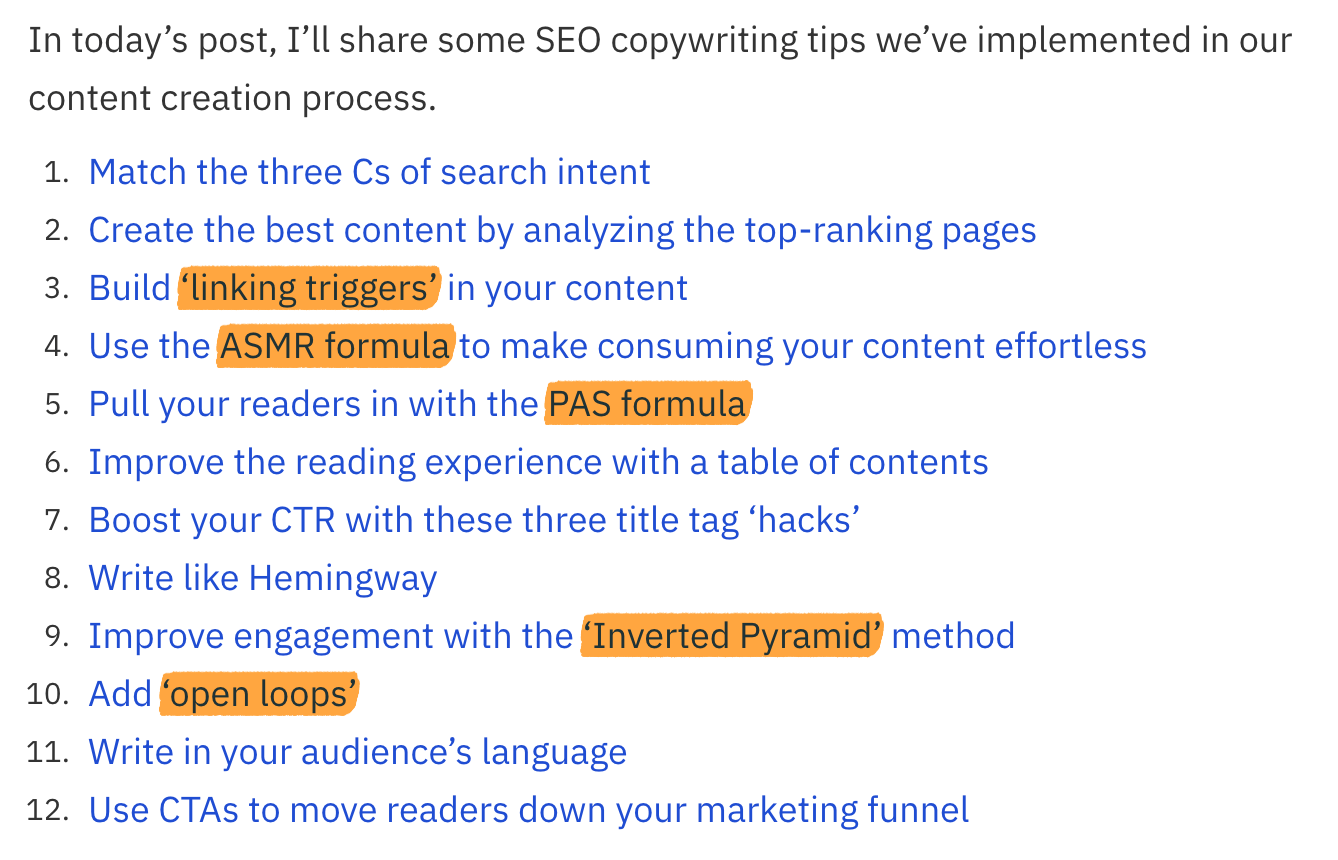
3. Get rich snippets with schema markup
Rich snippets are search results with additional information below the title, description, and URL.
For example, Google shows ratings, cooking time, and calories for these recipe pages.
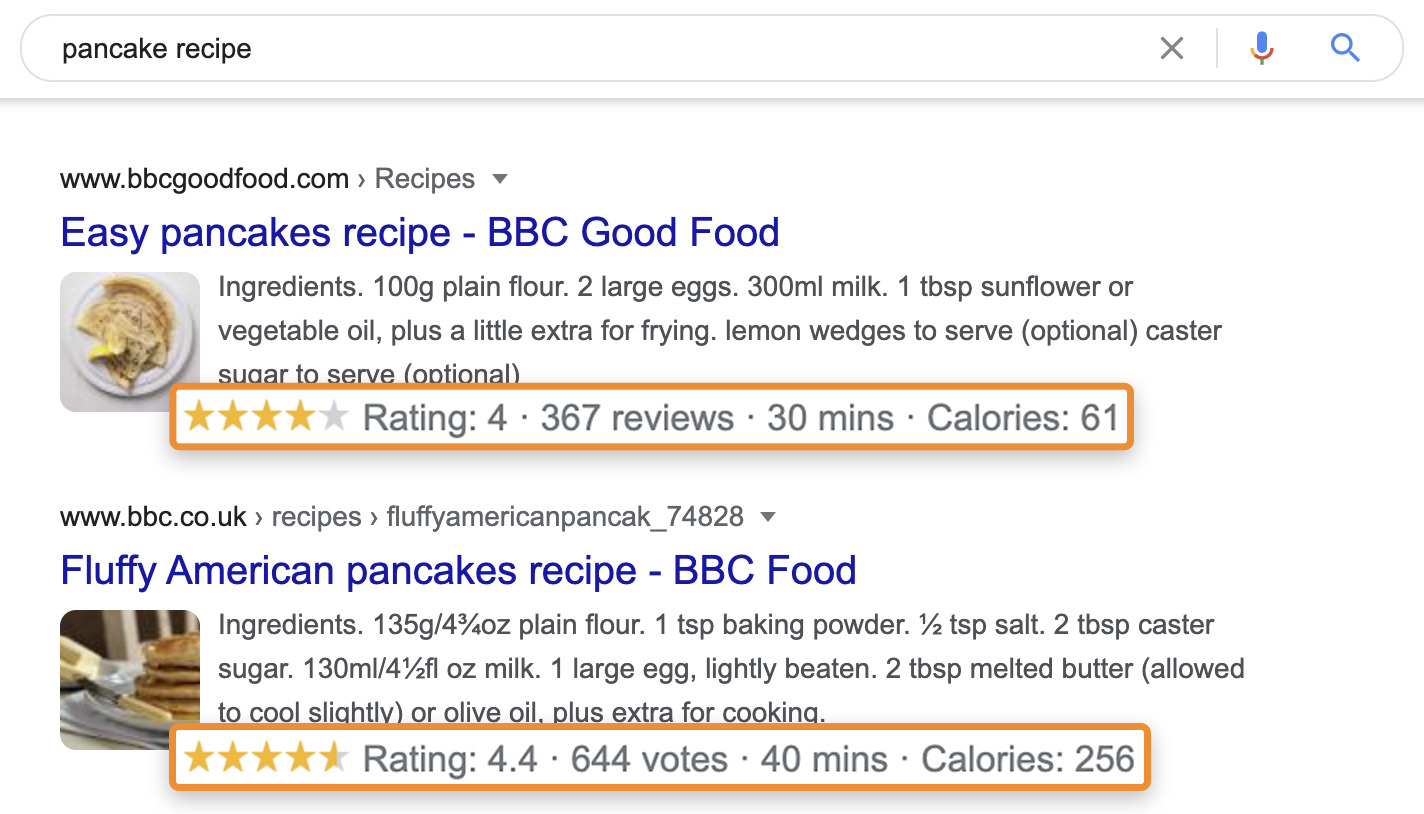
Google pulls this information from a type of structured data on the page called schema markup. In this case, the pages are using a specific type of schema markup called recipe markup.
Here are a few other types of schema markup that can lead to rich snippets:
For example, here’s a page in the SERP that uses FAQ markup:

FAQ rich snippets.
Although rich snippets are not a ranking factor, many believe that rich snippets can entice more clicks—at least for some pages.
If you use WordPress, you can add schema markup to posts and pages with popular plugins like Yoast or Rank Math. Just know that not all types of content are eligible for search enhancements like rich snippets.
4. Improve topical relevance
Google deems a page more relevant for the search query when it ‘contains other relevant content besides the keyword.’ For example, if your page is about dogs, listing breeds would probably make for a more relevant result when someone searches ‘dogs.’
If you followed the advice in chapter two, your content should already include many relevant words, phrases, and concepts. It’ll happen naturally as you write.
However, it’s easy to miss things—especially with complex topics.
For example, this is one of the top-ranking results for ‘how to brew beer.’ It’s a fairly thorough guide for a beginner but fails to mention the fact that you’ll need a siphon to transfer your beer from the fermenter to bottles.
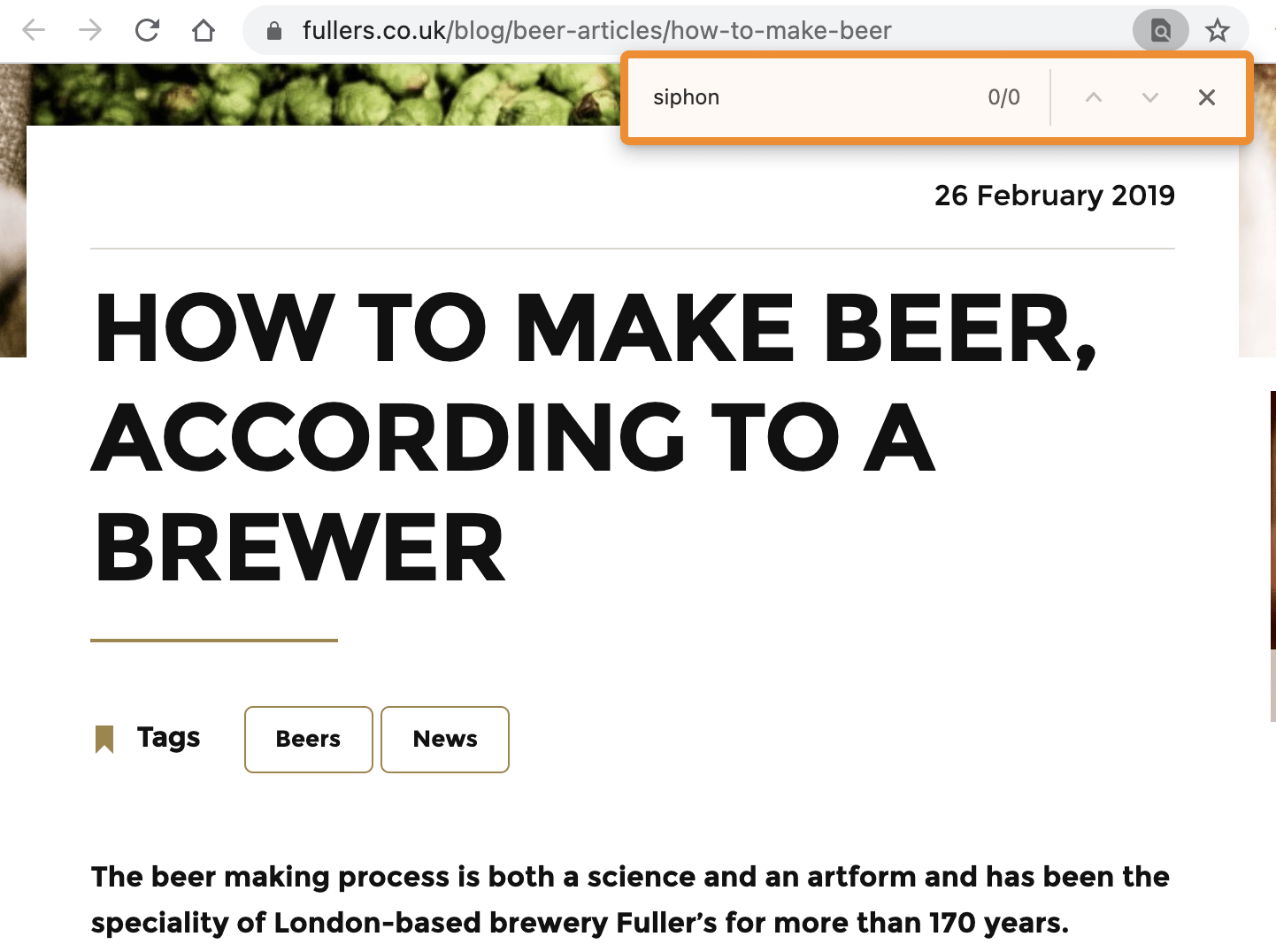
Page about making beer that lacks important details.
In this case, if you’re not ranking where you’d like and aren’t sure why that is, it might be worth looking deeper into what you might have missed from your page.
Here are a few ways you can do that.
Use the ‘Also talk about’ report
The ‘Also talk about’ report in Keywords Explorer shows keywords and phrases frequently mentioned by the top 100 ranking pages. Just plug in your target keyword to see what the top-ranking pages talk about at a glance.
For example, if we check the report for ‘how to brew beer,’ we see many keywords relating to ingredients and equipment like:
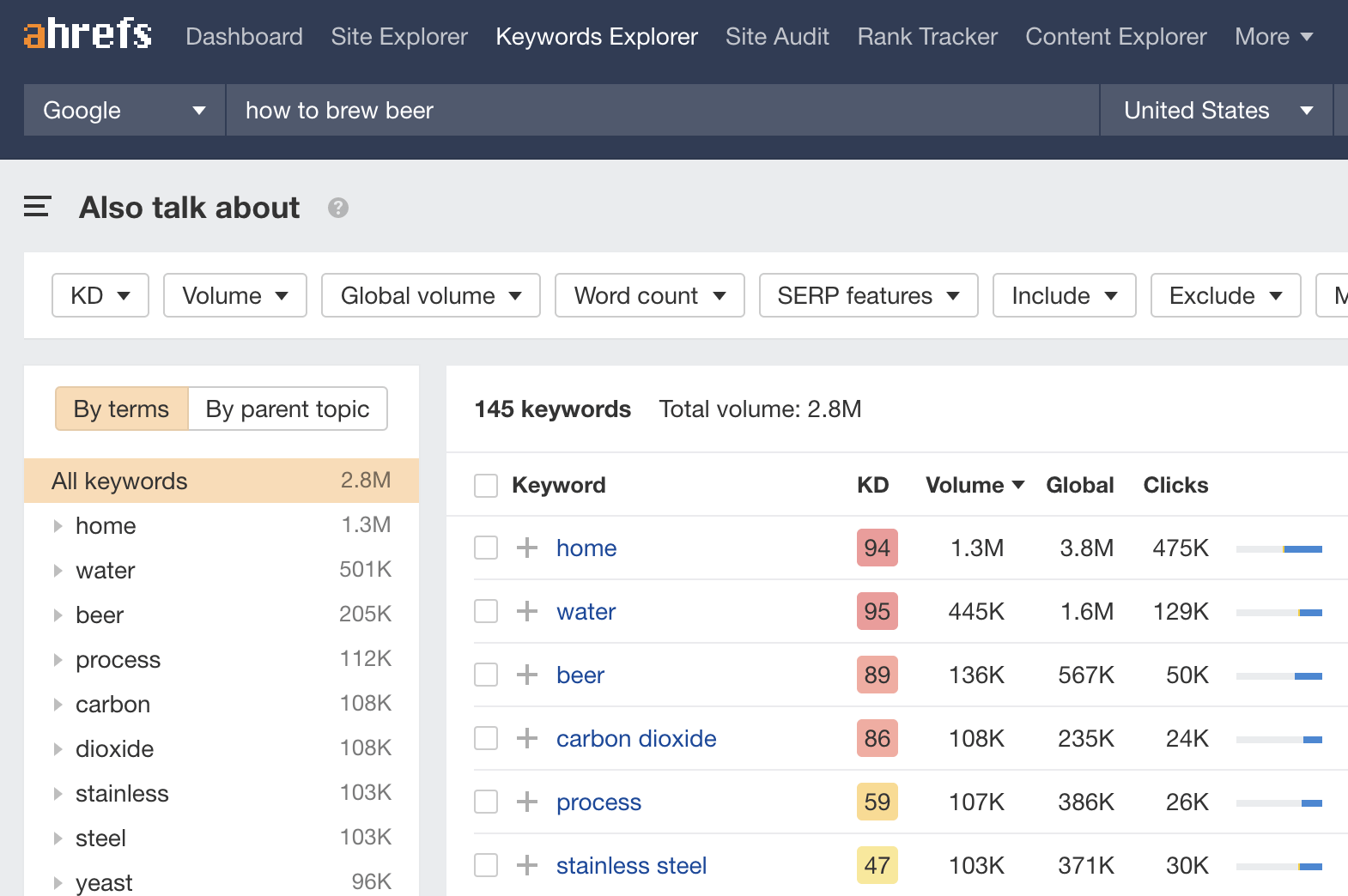
Things that top-ranking pages for “how to brew beer” also talk about via Ahrefs’ Keywords Explorer.
Given that aspiring brewers need to know about most of these things, it’d be worth talking about them in a beginner’s brewing guide. If you’ve neglected to include these things, it might be worth updating.
Just know that you should use common sense when doing this. The fact that a word or phrase appears in the ‘also talk about’ report doesn’t necessarily mean that you should talk about it in your content. Use the report to uncover relevant things that you missed.
Run a TF-IDF analysis
TF-IDF stands for Term Frequency-Inverse Document Frequency. It’s a statistical measure that aims to judge the relative importance of a word in a document. It does this by comparing how often the word occurs in that document compared to a bunch of others.
By running a TF-IDF analysis between yours and other relevant top-ranking pages, you can sometimes uncover concepts covered by competing pages that you missed.
For example, if we do this for our post about negative SEO, we see that competing pages talk about things like the disavow file and unnatural links.
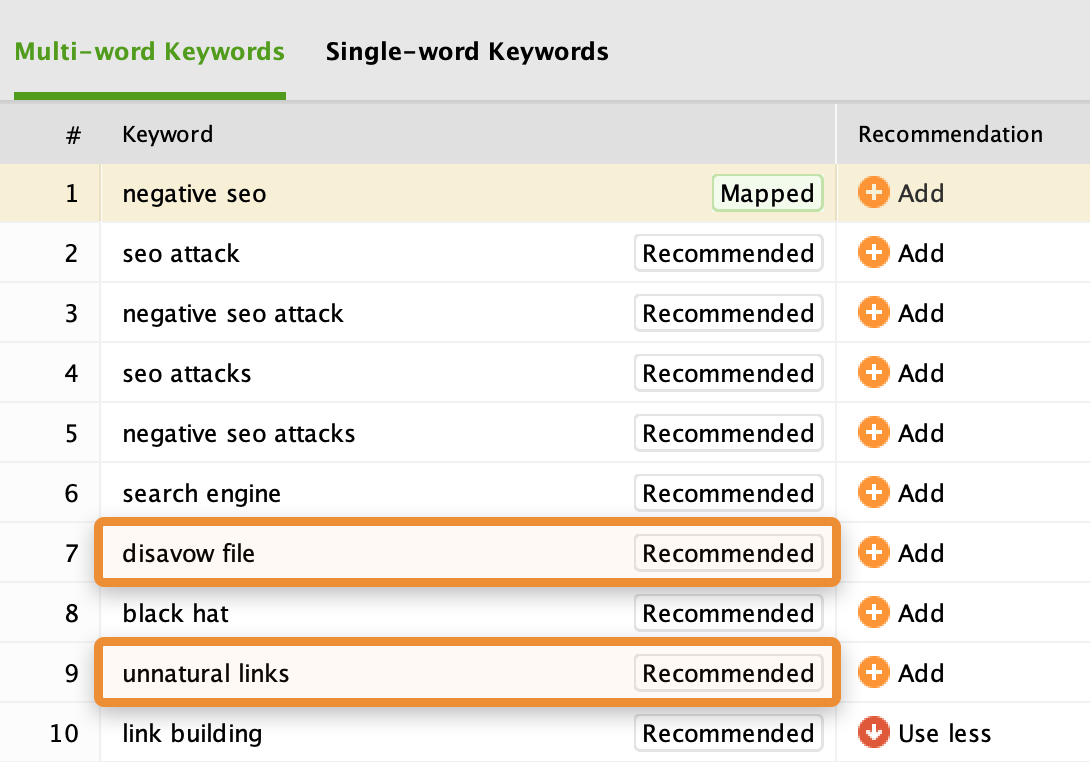
Just know that the idea here isn’t to ‘sprinkle these keywords’ into your content, but rather to uncover relevant ideas and concepts that you might have forgotten to mention. You can then update things to create a more relevant and comprehensive page.
Also, be aware that most TF-IDF tools suggest using ‘important words and phrases a specific number of times on your page. This is not how we recommend using them.
